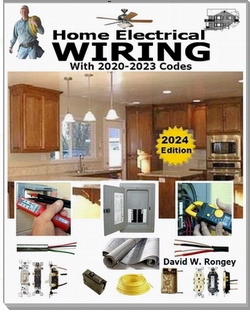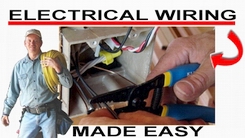» Home Energy Savings
» Need Electrical Help? Ask the Electrician
Home Energy Audit

|
By Dave Rongey
Summary: An energy audit will show you which areas of your home use the most energy and help you decide the most effective way to reduce energy costs. © By: Dave Rongey |
Track Your Energy Costs with a Home Energy Audit
You can conduct a simple audit yourself, contact your local utility, or call an independent energy auditor for a more comprehensive examination.
Check your home's insulation levels, and check for open fireplace dampers. Look for holes or cracks around doors, light and plumbing fixtures, and other places where air may leak into or out of your home.
Make sure your appliances and heating and cooling systems are properly maintained, and study your family's lighting needs and use patterns, paying special attention to high-use areas.
Check out Your Home's Energy Use for more tips.
Your Home's Energy UseThe first step to taking a whole-house energy efficiency approach is to find out which parts of your house use the most energy. A home energy audit will pinpoint those areas and suggest the most effective measures for cutting your energy costs. You can conduct a simple home energy audit yourself, you can contact your local utility, or you can call an independent energy auditor for a more comprehensive examination. For more information about home energy audits, including free tools and calculators, visit the Consumer's Guide or the Residential Energy Services Network (RESNET) consumer page. |
 |
Heat Loss from a HouseA picture is worth a thousand words, and .in this case, lost heating dollars. This thermal photograph shows heat leaking from a house during those expensive winter heating months. The white, yellow, and red colors show heat escaping. The red represents the area of the greatest heat loss. |
Energy Auditing Tips
|
Formulating Your PlanAfter you have identified where your home is losing energy, assign priorities by asking yourself a few important questions:
Once you assign priorities to your energy needs, you can form a whole house efficiency plan. Your plan will provide you with a strategy for making smart purchases and home improvements that maximize energy efficiency and save the most money. Another option is to get the advice of a professional. Many utilities conduct energy audits for free or for a small charge. For a fee, a professional contractor will analyze how well your home's energy systems work together and compare the analysis to your utility bills. He or she will use a variety of equipment such as blower doors, infrared cameras, and surface thermometers to find leaks and drafts. After gathering information about your home, the contractor or auditor will give you a list of recommendations for cost-effective energy improvements and enhanced comfort and safety. A good contractor will also calculate the return on your investment in high-efficiency equipment compared with standard equipment. |
Tips for Finding a Contractor
|
The Safest Way to Test Electrical Devices and Identify Electric Wires!The Non-Contact Electrical TesterThis is a testing tool that I have had in my personal electrical tool pouch for years, and is the first test tool I grab to help identify electrical wiring. It is a Non-contact tester that I use to easily Detect Voltage in Cables, Cords, Circuit Breakers, Lighting Fixtures, Switches, Outlets and Wires. Simply insert the end of the tester into an outlet, lamp socket, or hold the end of the tester against the wire you wish to test. Very handy and easy to use.
The Quickest Way to Check for Faulty Electrical Wiring!The Plug-In Outlet TesterThis is the first tool I grab to troubleshoot a problem with outlet circuit wiring. This popular tester is also used by most inspectors to test for power and check the polarity of circuit wiring. It detects probable improper wiring conditions in standard 110-125 VAC outlets Provides 6 probable wiring conditions that are quick and easy to read for ultimate efficiency Lights indicate if wiring is correct and indicator light chart is included Tests standard 3-wire outlets UL Listed Light indicates if wiring is incorrect Very handy and easy to use.
Strip Off Wire Insulation without Nicking and Damaging the Electric Wire!The Wire Stripper and Wire CutterMy absolute favorite wire stripping tool that I have had in my personal electrical tool pouch for years, and this is the tool I use to safely strip electrical wires. This handy tool has multiple uses: The wire gauges are shown on the side of the tool so you know which slot to use for stripping insulation. The end of the tool can be used to grip and bend wire which is handy for attaching wire onto the screw terminals of switches and outlets.. The wire stripper will work on both solid and stranded wire. This tool is Very Handy and Easy to Use. |
||
Residential Electrical Parts and AccessoriesLight Switches 120volt Outlets Circuit Breakers Electrician Tools Voltage Testers |















